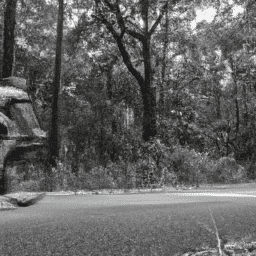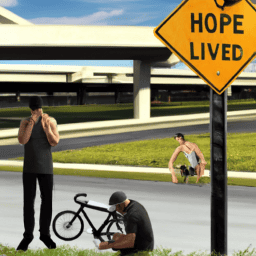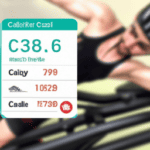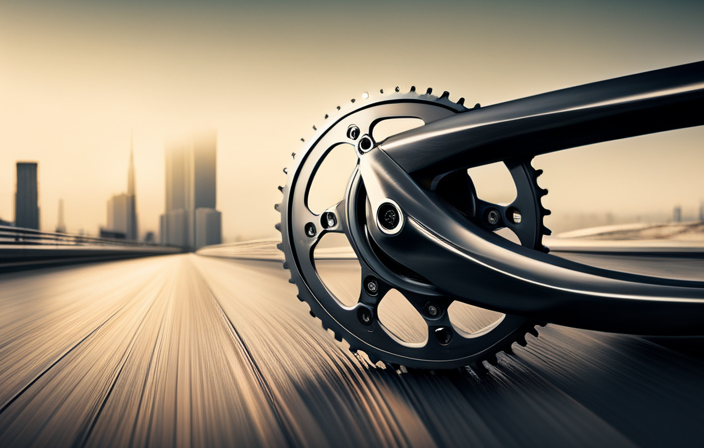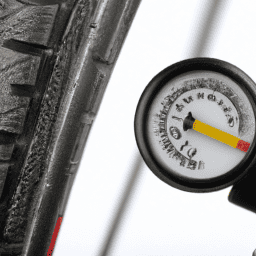Do you want to lose some weight and enhance your physical health? Biking is a fantastic option to reach your weight reduction targets, as it allows you to enjoy nature and breathe in some clean air. However, what’s the ideal duration for cycling to maximize fat loss?
The answer depends on various factors, such as your weight loss goals, current fitness levels, and diet. In this article, we’ll take a closer look at how long you should cycle to lose weight and offer some tips on how to plan your cycling workouts to get the best results.
So, hop on your bike and let’s get started!
Key Takeaways
- Cycling can help achieve weight loss goals, but it should be accompanied by a balanced diet.
- Assessing fitness level is crucial to starting a successful weight loss journey on a bike.
- It’s important to set realistic weight loss goals and track progress regularly.
- Modifying cycling workouts to better suit individual needs and preferences can make it more enjoyable and sustainable.
Determine Your Weight Loss Goals
If you’re looking to shed some pounds, it’s important to first establish your weight loss goals. Before you start pedaling away, take a moment to consider how much weight you want to lose, and over what period of time. This will help you determine how long you should bicycle to achieve your desired weight loss.
It’s important to set realistic goals and track your progress along the way. If you find that you’re not losing weight as quickly as you’d like, don’t be afraid to adjust your goals accordingly.
Tracking progress is important because it helps you stay motivated and see the progress you’ve made. Instead of just focusing on the number on the scale, take measurements of your waist, hips, and other problem areas. You might find that you’re losing inches even if the number on the scale isn’t changing as quickly as you’d like.
Adjusting your goals as needed ensures that you don’t get discouraged if you’re not seeing the results you want. Consider your current fitness level and how much time you realistically have to dedicate to bicycling, and then move on to the next step.
Consider Your Current Fitness Level
Assessing your fitness level is key to starting a successful weight loss journey on your bike. Before you begin cycling for weight loss, you need to understand your current fitness level. This will help you determine your starting point and make workout modifications that will help you achieve your weight loss goals.
A fitness assessment can give you a clear picture of your overall health and fitness level. This can include measuring your body composition, cardiovascular endurance, muscular strength, and flexibility.
Once you have a better understanding of your fitness level, you can modify your cycling workouts to better suit your needs. For example, if you’re new to cycling, you may need to start with shorter, less intense rides and gradually increase the intensity and duration over time.
By taking the time to assess your fitness level and make workout modifications, you’ll be better equipped to achieve your weight loss goals.
Next, we’ll discuss how to plan your cycling workouts to maximize weight loss.
Plan Your Cycling Workouts
Once you know your fitness level, you can plan cycling workouts that suit your needs and help you achieve your weight loss goals more effectively.
When planning your workouts, consider whether you prefer outdoor or indoor cycling. Outdoor cycling allows you to enjoy the fresh air and scenery, while indoor cycling provides a controlled environment that may be more convenient for some people.
Additionally, think about the best time of day to cycle. Some people find that cycling in the morning helps them start their day with energy and focus, while others prefer to cycle in the evening as a way to unwind and relieve stress.
Incorporating these factors into your cycling routine can make it more enjoyable and sustainable, which is important for long-term weight loss success. However, it’s also important to monitor your progress to ensure that you’re making progress towards your goals.
The next step is to learn how to track your progress and make adjustments to your routine as needed.
Monitor Your Progress
To make sure you’re on track with your cycling goals, it’s important to monitor your progress regularly and make adjustments to your routine as needed. One way to do this is to use tracking tools such as a fitness app or activity tracker to keep track of your mileage, speed, and calories burned. This can help you see how far you’ve come and give you a sense of accomplishment, which can be a great motivator to keep going.
Another way to stay accountable and motivated is to find an accountability partner, such as a friend or family member, who can join you on your rides or check in with you regularly to see how you’re progressing. Having someone to share your experiences with and hold you accountable can help you stay on track and make sure you’re staying committed to your goals.
Just remember, cycling alone won’t be enough to help you lose weight. Incorporating a balanced diet is also key to achieving your weight loss goals.
Incorporate a Balanced Diet
You can easily improve your cycling performance by incorporating a balanced diet that fuels your body with the necessary nutrients. Healthy food choices are essential to help you lose weight and maintain a healthy lifestyle.
It’s important to eat plenty of fruits, vegetables, whole grains, lean proteins, and healthy fats. These foods provide the energy your body needs to power through your rides and recover afterward.
Portion control is also crucial when it comes to weight loss. While it’s tempting to indulge in large portions, it’s important to remember that excess calories can lead to weight gain. Aim for smaller, more frequent meals throughout the day to keep your metabolism going and prevent overeating.
A registered dietitian can help you determine the right portion sizes for your needs and goals. By making healthy food choices and practicing portion control, you’ll not only improve your cycling performance but also achieve your weight loss goals and feel great on your rides.
Frequently Asked Questions
Can I lose weight by biking for just 10 minutes a day?
Biking for just 10 minutes a day can be beneficial, but it’s not enough to achieve significant weight loss. Incorporating interval training and longer bike rides can help you burn more calories and achieve your weight loss goals.
Is it better to bike on an empty stomach or after eating?
Before hopping on your bike, consider your meal timing. Pre-workout meals should be light and eaten 30 minutes to an hour before. Post-workout meals should include protein and carbohydrates to refuel and repair muscles.
How often should I change up my cycling routine to avoid hitting a weight loss plateau?
To avoid hitting a weight loss plateau, vary the intensity, frequency, and duration of your cycling routine. Incorporating strength training can also help. Experiment with new routes, terrain, and intervals to challenge your body and keep it guessing.
What are some common mistakes people make when trying to lose weight through cycling?
Trying to lose weight through cycling is like trying to fill a bucket with a leak. Poor cycling form can lead to injury and burnout, while neglecting dietary habits can hinder progress. Avoid common mistakes by seeking guidance from a professional.
Should I invest in specific gear or equipment to optimize my weight loss while cycling?
To optimize weight loss through cycling, consider gear options like clipless pedals and a heart rate monitor. A cost benefit analysis can help determine which equipment is worth the investment.
Conclusion
Congratulations! You’ve taken the first step towards a healthier lifestyle by considering cycling as a means to lose weight. But before you hop on your bike, let’s review what we’ve learned.
Firstly, set realistic weight loss goals. Remember, losing weight takes time and effort.
Secondly, consider your current fitness level. Don’t push yourself too hard too soon, start slow and gradually increase the intensity of your workouts.
Next, plan your cycling workouts. Mix things up by incorporating different types of rides, such as hill climbs or interval training.
It’s important to monitor your progress, so keep track of your rides and weight loss.
Finally, don’t forget to incorporate a balanced diet. Cycling alone won’t lead to weight loss, it’s a combination of regular exercise and healthy eating habits that will lead to success.
As the famous cyclist Lance Armstrong once said, "It’s not about the bike."Cycling can be a great way to lose weight, but it’s also about the journey towards a healthier lifestyle.
So, grab your bike and enjoy the ride towards a happier, healthier you.
